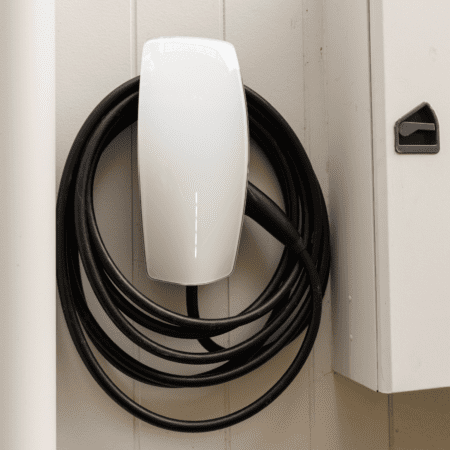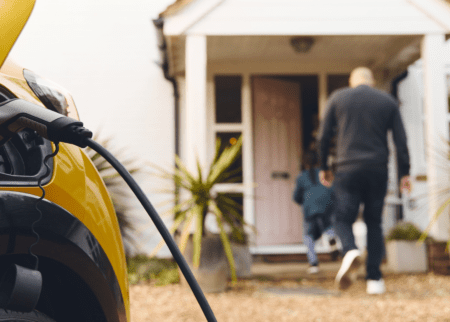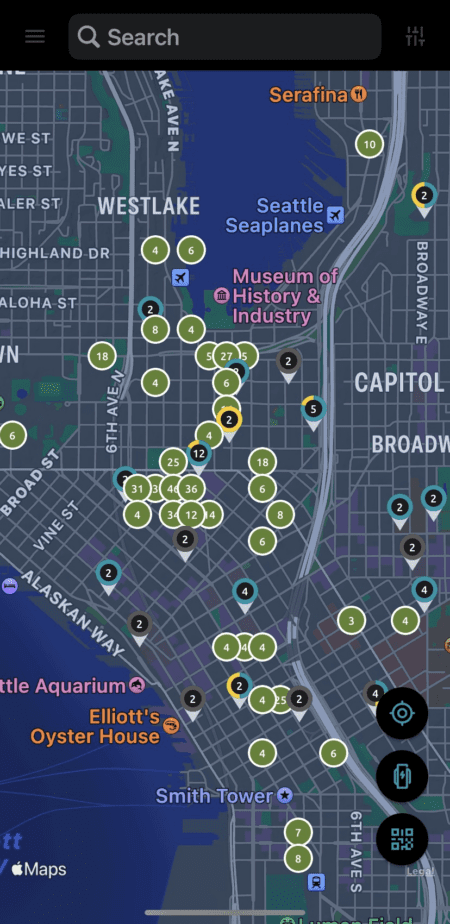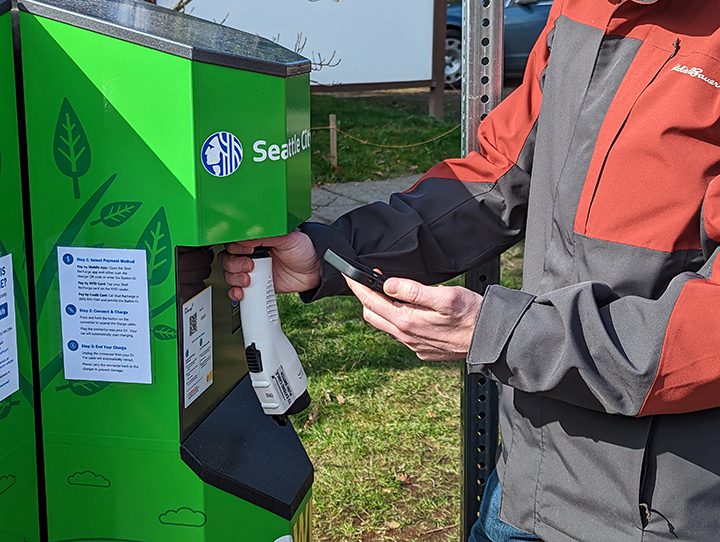
There are lots of reasons to drive an electric vehicle (EV). They’re less expensive to operate and better for our health. They’re better for the environment, especially when they’re powered by renewable energy sources like Seattle City Light’s hydroelectric dams. Plus, they’re just fun to drive.
Another reason to get an EV? Charging is affordable and easy. Last time, we covered what you should know before shopping for an EV. Today, in part two of our series on electric vehicles, we’re looking at what you need to know about how EV charging works.
How Charging Works
Charging is refilling an EV’s battery with electricity. Think of this like you would filling a gas tank. The main difference is just how quickly you can “fill” an EV’s battery with electricity, which depends on the type of charger you use.
For charging, you have three types of chargers available:
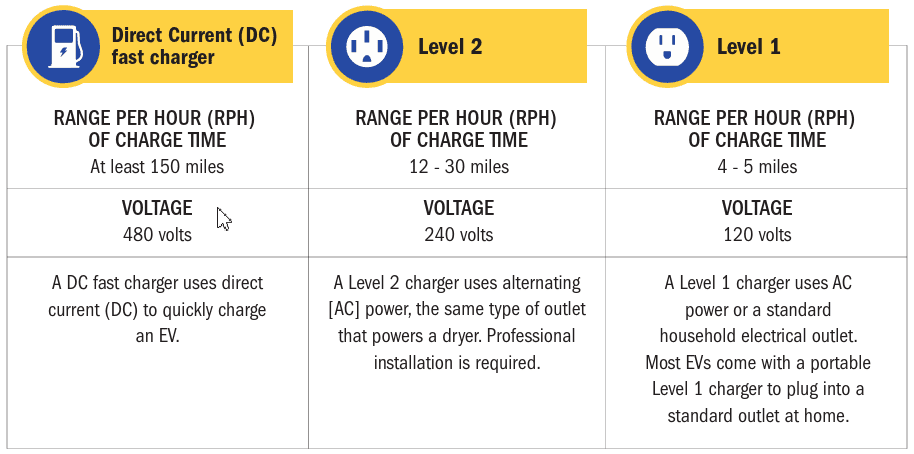
- Level 1 Charging: the slowest but most available option. All EVs can be plugged into a standard 120-volt electrical outlet and start charging right away.
- Level 2 Charging: a faster option that uses 240-volt electricity, like what a household electric stove or clothes dryer uses.
- DC Fast Charging: the fastest option, but only for public charging due to high cost and large power requirements.
Charging is simple. An EV typically comes with a charging cord ready for Level 1 charging at home. Owners can charge their cars overnight at home, plugging them into a standard wall outlet — just like a cell phone. This can provide a typical midsize EV with about five miles of range per hour of charge time, or about 60 miles of range during an overnight charge.
Level 1 charging at home is convenient. But if you need a faster option, consider installing a Level 2 charging setup. While this can cost around $2,000 for parts and installation, this will greatly speed up your charging time. Level 2 chargers are available in different power levels but most commonly can provide a typical midsize EV with about 25 to 35 miles of range per hour of charge time, or 300 to 420 miles of range during an overnight charge.
How to Plan for Charging
A big part of charging your EV comes down to planning. Even with more charging stations coming online, many potential EV purchasers still worry that they won’t be able to find a place to charge when out and about.
So, when planning for charging, ask yourself a couple of questions:
- Can you provide your own at-home charger?
- Does your workplace have chargers that you can use?
Unlike a gas car, drivers with at-home or workplace charging can top-off their vehicle battery most days, so there’s no need to worry about how long it would take to charge your battery from 0% to 100%. The average driver in the Seattle metro area only drives about 25 miles per day. This means that if you’re charging every day, you’ll likely be starting your charge at 80% or 90% every time you plug-in, in which case a Level 1 charger can easily top-off your battery to 100% overnight or during the workday with time to spare. Drivers with significantly longer commutes can still fully charge their vehicle overnight or during the workday with a more powerful Level 2 charger.
If you’re unable to provide your own at-home charger and your workplace doesn’t offer them, check if there are public fast charging stations or curbside Level 2 chargers available in your area. Most people can use public fast chargers and Level 2 chargers just once or twice a week to fully meet their driving needs. And keep your eyes out for new charging installations in the future — as EVs continue to grow in popularity, City Light and others are helping to improve EV infrastructure and make charging more accessible than ever.
How Much Charging Costs
If you’re able to use Level 1 charging at home, this is your least expensive option. For example, let’s say you drive about 1,000 miles each month and pay the City Light average of $0.13 for each kilowatt-hour (kWh) of electricity. By charging at at-home, your costs will be between $32 and $43, calculated based on a typical midsize EV being able to drive between three and four miles on one kWh of electricity.
Finally, potential EV buyers usually want to know how much it costs to charge an EV. In general, it costs significantly less per month to charge an EV than to buy gas — particularly since gas prices are prone to fluctuate. However, figuring out costs for yourself does require some math and depends on several factors, such as your driving habits and what you pay for residential electricity.
Now, let’s look at how that compares to filling up your gas tank. New gas-powered cars in the United States average 25 miles per gallon with a mix of city and freeway driving. So, for 1,000 miles monthly, you would need 40 gallons of gas. If we look at the average price of gas in King County at the time of this writing ($5.30), your monthly fuel expense for an average gas-powered car is about $212. This is only an estimate since fuel prices and mileage vary. This estimate helps make it clear that recharging an EV costs less than refueling a gas-powered car.
For public charging options, these are more expensive than a Level 1 but can charge much more quickly. City Light’s Level 2 chargers can provide a typical EV with over 30 miles of range for one hour of charge time. At the time of this writing, the cost for one kWh of charge (about 3 miles of range) is $0.21. So, one hour of charge time and 30 miles of range costs $2.
For City Light’s DC fast chargers, a typical session may deliver 25 kWh in 30-minutes and cost $4-7 depending upon location and time of use. This is about 60 miles of driving range for your EV.
Generally, the faster the charge, the higher the cost. This is because faster chargers are more complicated and expensive to build and maintain and also put a larger strain on the electric grid. However, considering the price of gas, an average gas-powered vehicle will still pay double or more than what an EV owner is spending for comparable range.
